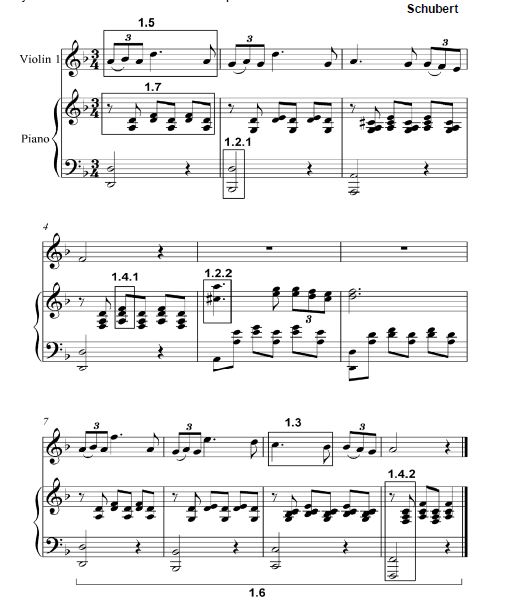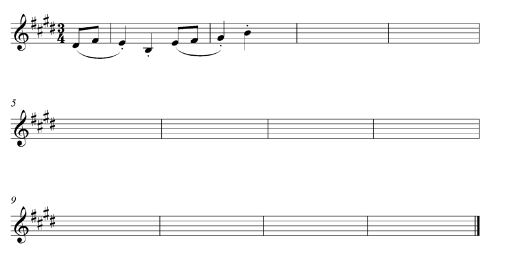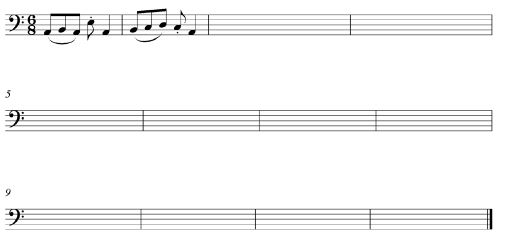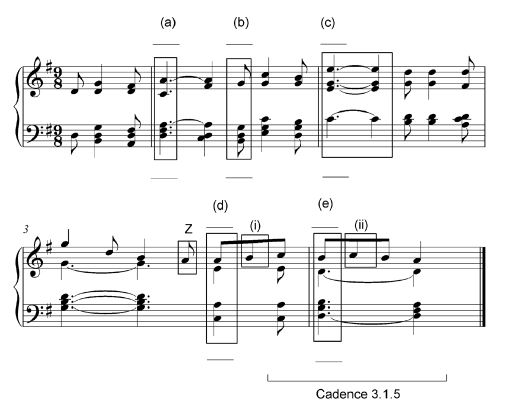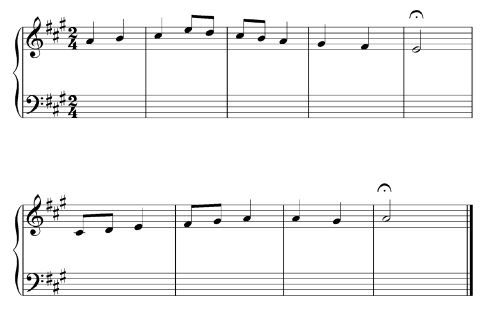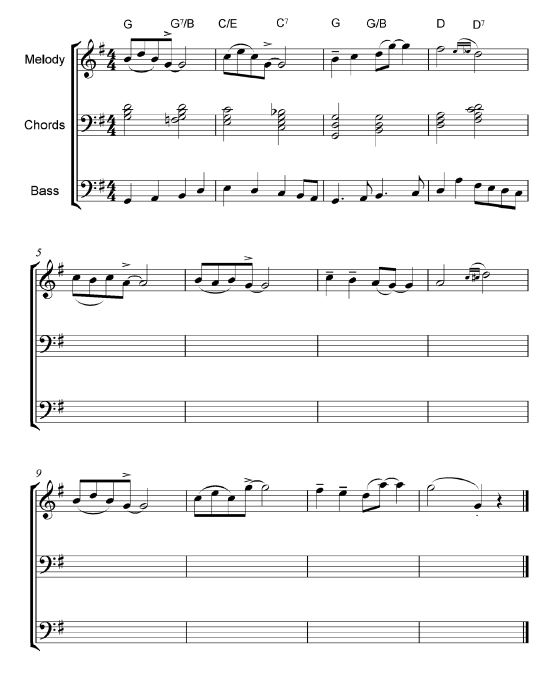MUSIC PAPER 1 GRADE 12 QUESTIONS - NSC PAST PAPERS AND MEMOS FEBRUARY/MARCH 2017
Share via Whatsapp Join our WhatsApp Group Join our Telegram GroupMUSIC
PAPER 1
GRADE 12
NSC PAST PAPERS AND MEMOS
FEBRUARY/MARCH 2017
INSTRUCTIONS AND INFORMATION
- This question paper consists of FIVE sections, namely SECTIONS A, B, C, D and E.
- SECTIONS A and B are COMPULSORY.
- SECTION C: WESTERN ART MUSIC (WAM), SECTION D: JAZZ and SECTION E: INDIGENOUS AFRICAN MUSIC (IAM) are choice questions. Answer only ONE of these sections (SECTION C or D or E).
- Write all music notations in SECTION A in pencil and all written text in blue or black ink on this question paper.
- Answer SECTION B and SECTION C or D or E in blue or black ink in the ANSWER BOOK provided.
- Number the questions correctly according to the numbering system used in this question paper.
- The last page of this question paper is manuscript paper intended for rough work. Candidates may remove this page.
- Candidates may NOT have access to any musical instrument for the duration of this examination.
- Candidates must take note of the mark allocation for each question to provide enough information in their answers.
- Write neatly and legibly.
MARKING GRID
SECTION | QUESTION | MARKS | MARKER | MODERATOR |
A: THEORY OF MUSIC (COMPULSORY) | 1 | 20 | ||
2 | 15 | |||
3 | 10 | |||
4 | 15 | |||
SUBTOTAL | 60 | |||
AND | ||||
B: GENERAL MUSIC KNOWLEDGE (COMPULSORY) | 5 | 20 | ||
SUBTOTAL | 20 | |||
AND | ||||
C: WAM | 6 | 10 | ||
7 | 5 | |||
8 | 5 | |||
9 | 5 | |||
10 | 15 | |||
SUBTOTAL | 40 | |||
OR | ||||
D: JAZZ | 11 | 10 | ||
12 | 5 | |||
13 | 5 | |||
14 | 5 | |||
15 | 15 | |||
SUBTOTAL | 40 | |||
OR | ||||
E: IAM | 16 | 10 | ||
17 | 5 | |||
18 | 5 | |||
19 | 5 | |||
20 | 15 | |||
SUBTOTAL | 40 | |||
GRAND TOTAL | 120 | |||
QUESTIONS
SECTION A: THEORY OF MUSIC (COMPULSORY) (90 minutes)
Answer QUESTION 1
AND QUESTION 2.1 OR 2.2
AND QUESTION 3.1 OR 3.2
AND QUESTION 4.1 OR 4.2.
Answer the questions in the spaces provided on this question paper. QUESTION 1 (25 minutes)
Study the extract below and answer the questions that follow.
Schuber
t
1.1 Name the main key of this piece. ______________________________________________ (1)
1.2 Name the intervals at 1.2.1 and 1.2.2 according to type and distance.
1.2.1 ______________________________________________
1.2.2 ______________________________________________ (2)
1.3 Write and name the inversion of the interval at 1.3. _______________________ (1)
1.4 Name the triads at 1.4.1 and 1.4.2 according to type and position/inversion.
1.4.1 _____________________________________________
1.4.2 ______________________________________________ (2)
1.5 Rewrite bar 1 of the violin part for viola using the same pitch. (2)
1.6 Transpose the bass part from bars 7–10 a perfect fourth higher. Do NOT use a key signature. 
1.7 Rewrite bar 1 of the right-hand part of the piano in compound time. Add the new time signature. 
1.8 Write the scales below as indicated. Use semibreves.
1.8.1 Write F# melodic minor, ascending and descending, with key signature. Mark the semitones. 
1.8.2 Write the Aeolian mode on E, descending in the alto clef.
Do NOT use a key signature. 
1.8.3 Write a chromatic scale on Bb, ascending only. 
[20]
QUESTION 2 (25 minutes)
Answer EITHER QUESTION 2.1 OR QUESTION 2.2.
2.1 Complete the opening motif below to form a twelve-bar melody in ternary form for any single-line melodic instrument of your choice. Name the instrument for which you are writing. Indicate the tempo and add dynamic and articulation marks.
Instrument: _________________________
Tempo: _________________________
The melody will be marked according to the following criteria:
DESCRIPTION | MARK ALLOCATION | CANDIDATE'S MARKS |
Form and cadential points | 3 | |
Correctness | 2 | |
Quality | 10 | |
TOTAL | 15 |
[15]
OR
2.2 Complete the opening motif below to form a twelve-bar melody in ternary form for any single-line melodic instrument of your choice. Name the instrument for which you are writing. Indicate the tempo and add dynamic and articulation marks.
Instrument: ________________________
Tempo: _________________________
The melody will be marked according to the following criteria:
DESCRIPTION | MARK ALLOCATION | CANDIDATE'S MARKS |
Form and cadential points | 3 | |
Correctness | 2 | |
Quality | 10 | |
TOTAL | 15 |
[15]
QUESTION 3 (10 minutes)
Answer EITHER QUESTION 3.1 OR QUESTION 3.2.
3.1 Study the extract by Mendelssohn below and answer the questions that follow.
3.1.1 Name the key of this extract.
___________________________________________________ (1)
3.1.2 Identify chords (a)–(e) and figure them on the score. Use EITHER figuring below the score, for example V6, OR chord symbols above the score, for example C/E. (5)
3.1.3 Name the types of non-chordal notes at (i) and (ii).
- __________________________________________________
- __________________________________________________ (2)
3.1.4 Which ONE of the following do you associate with the note at Z? Make a cross (X) in the appropriate block. (1)
Anticipation | Suspension | Appoggiatura | Chord note |
3.1.5 Name the cadence with which this extract ends.
_____________________________________________________ (1)
[10]
OR
3.2 Study the extract from Till by Charles Danvers below and answer the questions that follow. 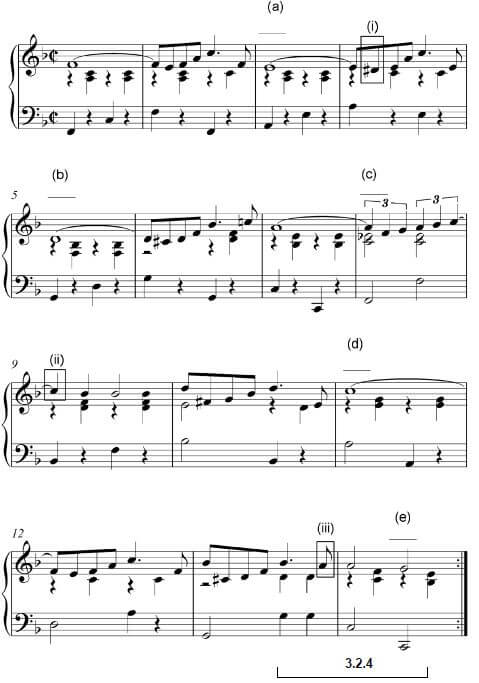
3.2.1 Name the key of this extract.
___________________________________________ (1)
3.2.2 Identify the chords from (a) to (e) and figure them on the score. Use chord symbols above the score, for example Bb/D. (5)
3.2.3 Name the types of non-chordal notes at (i)–(iii).
- _________________________________________________
- _________________________________________________
- _________________________________________________ (3)
3.2.4 Name the cadence at the end of this extract.
__________________________________________________ (1)
[10]
QUESTION 4 (30 minutes)
Answer EITHER QUESTION 4.1 OR QUESTION 4.2.
4.1 Complete the four-part vocal harmonisation below by adding the alto, tenor and bass parts.
The harmonisation will be marked according to the following criteria:
DESCRIPTION | MARK ALLOCATION | CANDIDATE'S MARKS |
Chord progression Choice of chords, correct use of cadence | 14 | |
Correctness Notation, doubling, spacing, voice leading | 16 | |
Quality Musicality, non-chordal notes, awareness of style, creativity | 10 | |
40 (÷ 8 x 3) | ||
TOTAL | 15 |
[15]
OR
4.2 Complete the piece below by adding a suitable bass line and harmonic material in the open staves. Continue in the style suggested by the given material in bars 1–4.
The harmonisation will be marked according to the following criteria:
DESCRIPTION | MARK ALLOCATION | CANDIDATE'S MARKS |
Chord progression | 15 | |
Correctness | 15 | |
Quality | 10 | |
40 (÷ 8 x 3) | ||
TOTAL | 15 |
[15]
TOTAL SECTION A: 60
SECTIONS B, C, D, E: GENERAL MUSIC KNOWLEDGE (90 minutes)
Answer SECTION B
AND SECTION C (Western Art Music)
OR SECTION D (Jazz)
OR SECTION E (Indigenous African Music).
Answer these questions in the ANSWER BOOK provided.
SECTION B: GENERAL (COMPULSORY)
QUESTION 5
5.1 Various options are provided as possible answers to the following questions. Write down the question number (5.1.1–5.1.10), choose the answer and make a cross (X) over the letter (A–D) of your choice in the ANSWER BOOK.
EXAMPLE: 5.1.11 |
5.1.1 Royalties paid to composers when their music is performed in public are called …
- copyright.
- performance rights.
- needletime rights.
- mechanical rights.
5.1.2 Royalties paid to songwriters and performers for CD sales or digital downloads are called …
- copyright.
- performance rights.
- needletime rights.
- mechanical rights.
5.1.3 SAMRO is the abbreviation for the …
- South African Music Relevance Organisation.
- South African Music Rights Organisation.
- South African Music Recording Organisation.
- South African Music Restrictions Organisation.
5.1.4 A person who writes the words of a song is a/an …
- arranger.
- editor.
- lyricist.
- performer.
5.1.5 A musical work is copyrighted …
- immediately after it has been composed.
- for 80 years after the work has been composed.
- until the year of the composer's death.
- only two weeks after it has been composed.
5.1.6 The symbol above the given note is called a/an …
- lower mordent.
- appoggiatura.
- upper mordent.
- turn.
5.1.7 In a Dorian mode, semitones occur between the …
- 3rd and 4th notes and the 6th and 7th notes.
- 2nd and 3rd notes and the 7th and 8th notes.
- 3rd and 4th notes and the 7th and 8th notes.
- 2nd and 3rd notes and the 6th and 7th notes.
5.1.8 Which ONE of the following means to become softer gradually?
- Accelerando
- Morendo
- Crescendo
- Rallentando
5.1.9 The musical term for is …
- lungo.
- portato.
- fermata.
- staccato.
5.1.10 The blues scale can be constructed by ….
- lowering the 3rd, 5th and 7th degrees of the major scale.
- raising the 3rd, 5th and 7th degrees of the major scale.
- lowering the 3rd, 5th and 7th degrees of the minor scale.
- raising the 3rd, 5th and 7th degrees of the minor scale. (10 x 1) (10)
5.2 Give the correct term for any FIVE of the following descriptions. Write down only the term next to the question number (5.2.1–5.2.8) in the ANSWER BOOK.
5.2.1 A musical texture consisting of a single melodic line
5.2.2 A musical texture consisting of a melodic line with accompaniment
5.2.3 A musical texture consisting of several independent melodic lines
5.2.4 A rhythmic pattern which repeats while other music material changes around it
5.2.5 Ancient scales with Greek names that are used in various music styles
5.2.6 The quality or colour of a voice or an instrument
5.2.7 Vocal music without instrumental accompaniment
5.2.8 The technical name for the third degree of a scale (5)
5.3 Write a paragraph in which you describe binary form. (5)
TOTAL SECTION B: 20
Answer SECTION C (WAM)
OR SECTION D (JAZZ)
OR SECTION E (IAM).
SECTION C: WESTERN ART MUSIC (WAM)
QUESTION 6
6.1 Which characters are associated with the following voice types in The Magic Flute by Mozart?
6.1.1 Soprano
6.1.2 Tenor
6.1.3 Baritone
6.1.4 Bass
6.1.5 Coloratura (5)
6.2 The Magic Flute is considered to be a Singspiel.
Write notes to substantiate this statement using examples from this opera. (5)
[10]
QUESTION 7
Study the table below which represents sonata form and answer the questions that follow.
EXPOSITION | DEVELOPMENT | RECAPITULATION |
7.1 In which section would one expect to find an episode? (1)
7.2 What is the function of the bridge in the exposition of this form? (1)
7.3 Briefly describe what happens in the development section. (2)
7.4 How is the recapitulation different from the exposition? (1)
[5]
QUESTION 8
Write a paragraph on the final (fifth) movement of Beethoven's Symphony No. 6 in which you link the title of this movement to the programmatic content. [5]
QUESTION 9
Define the Classical symphony and expain how Beethoven's Pastoral Symphony differs from the Classical symphonic model. [5]
QUESTION 10
Mendelssohn demonstrates both Classical and Romantic features in his Hebrides Overture.
Write an essay in which you discuss this statement.
You will be credited for the logical presentation of facts and the structure of your essay. The essay will be marked according to the following criteria:
CRITERIA | MARK ALLOCATION |
Classical features | 6 |
Romantic features | 6 |
Logical presentation and structure of the essay | 3 |
TOTAL | 15 |
[15]
TOTAL SECTION C: 40
OR
SECTION D: JAZZ
QUESTION 11
11.1 Describe prominent music characteristics of kwela. (3)
11.2 Name the instruments used in a typical mbaqanga band. (3)
11.3 Write down the title of a song associated with EACH of the following artists/groups:
11.3.1 Dolly Rathebe
11.3.2 Miriam Makeba
11.3.3 Sakhile
11.3.4 Philip Tabane (4)
[10]
QUESTION 12
Indicate whether the following statements concerning Cape jazz are TRUE or FALSE. Write down only 'true' or 'false' next to the question number (12.1–12.5) in the ANSWER BOOK.
12.1 It is inspired by blues and folk songs sung by descendants of the former slave communities living in the Western Cape.
12.2 It is influenced by the street carnival parade and instrumentation of the Mardi Gras.
12.3 It is a mixture of Xhosa and Zulu songs, as well as Latin-American styles.
12.4 It was originally mainly a piano jazz style.
12.5 Robbie Jansen is a famous saxophone player who is linked to the development of Cape jazz.
[5]
QUESTION 13
Discuss TWO international influences and TWO local influences on Miriam Makeba's music style. Comment on her unique vocal style. [5]
QUESTION 14
Write a paragraph in which you discuss the importance of the Jazz Epistles in the development of South African jazz. [5]
QUESTION 15
Marabi is a true example of an early South African jazz style.
Write an essay in which you expand on this statement by refering to the origins, characteristics and music examples of marabi.
You will be credited for the logical presentation of facts and the structure of your essay. The essay will be marked according to the following criteria:
CRITERIA | MARK ALLOCATION |
Origins | 5 |
Characteristics | 5 |
Music examples | 2 |
Logical presentation and structure of the essay | 3 |
TOTAL | 15 |
[15]
TOTAL SECTION D: 40
OR
SECTION E: INDIGENOUS AFRICAN MUSIC (IAM)
QUESTION 16
16.1 Indicate whether the following statements are TRUE or FALSE. Write only 'true' or 'false' next to the question number (16.1.1–16.1.4) in the ANSWER BOOK. If the statement is FALSE, write down the correct information.
16.1.1 Isicathamiya was popularised internationally by Ladysmith Black Mambazo's collaboration with Simon and Garfunkel.
16.1.2 Julian Bahula played drums for Sello Galane.
16.1.3 Mahotella Queens is a group that sings free kiba.
16.1.4 The Manhattan Brothers was a kwela group. (4)
16.2 Define malombo. (2)
16.3 Define the following terms associated with maskandi:
16.3.1 Ikati
16.3.2 Ukupika (4)
[10]
QUESTION 17
Write a paragraph in which you define and describe free kiba. Refer to the traditional drums used in this style of music. [5]
QUESTION 18
Briefly discuss ONE of the following ceremonies. Refer to the function, ceremonial features and the role of dance, music and instruments.
- AmaZulu: Amahubo
- AmaSwati: Incwala
- AmaXhosa: Intonjane
- AmaNdebele: Luma
- Basotho: Lebollo
- Bapedi: Byale
- Batswana: Bojale
- Vhavenda: Domba
- Batsonga: Mancomane [5]
QUESTION 19
Discuss the features of praise poetry as used in African music. [5]
QUESTION 20
Isicathamiya has become one of the most readily recognised South African music genres of the late 20th and early 21st centuries.
Write an essay in which you discuss this statement with specific reference to Ladysmith Black Mambazo.
You will be credited for the logical presentation of facts and the structure of your essay.
The essay will be marked according to the following criteria:
CRITERIA | MARK ALLOCATION |
Origins | 3 |
Style characteristics | 5 |
Contribution of Ladysmith Black Mambazo | 4 |
Logical presentation and structure of the essay | 3 |
TOTAL | 15 |
[15]
TOTAL SECTION E: 40
GRAND TOTAL: 120
